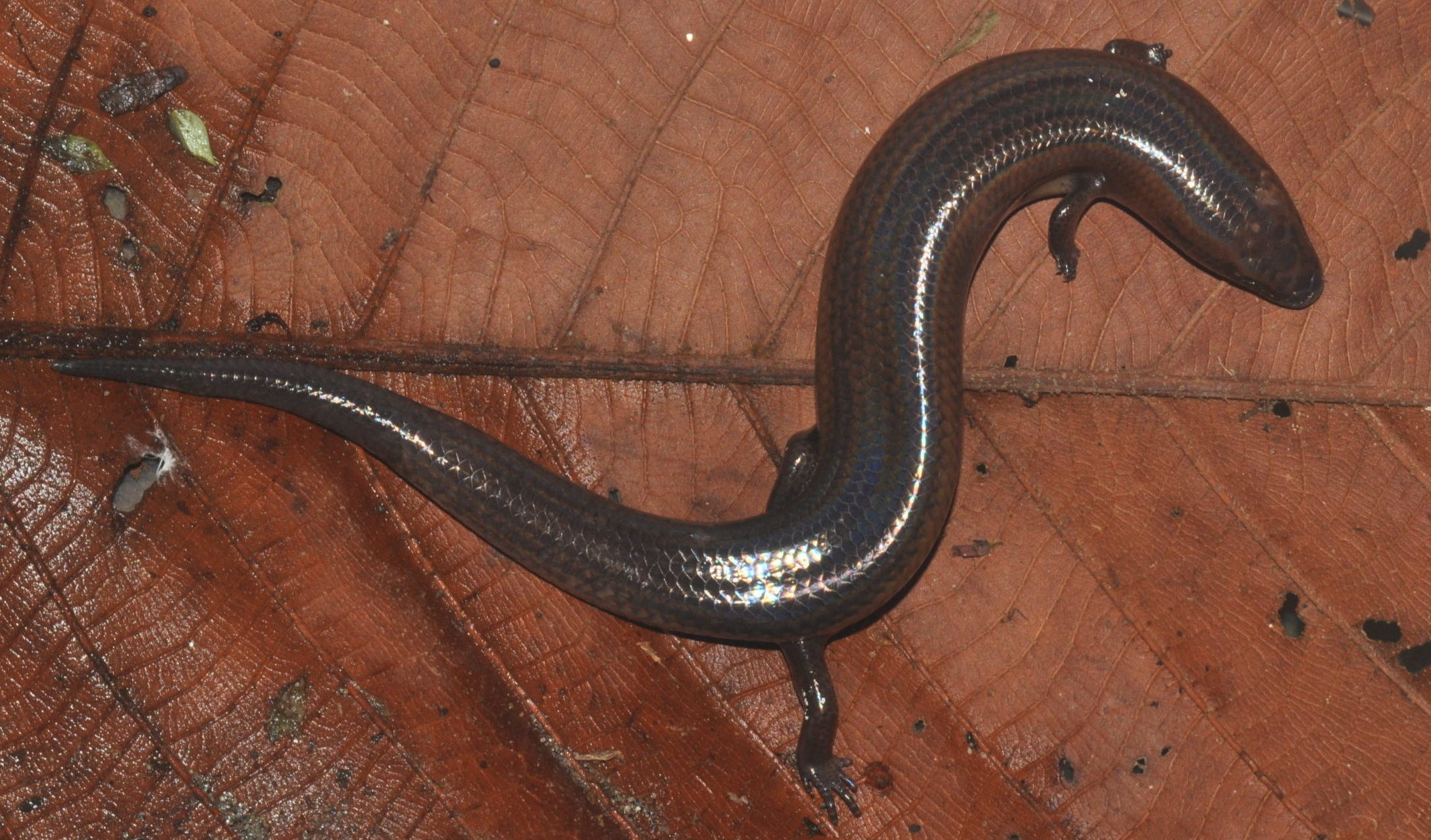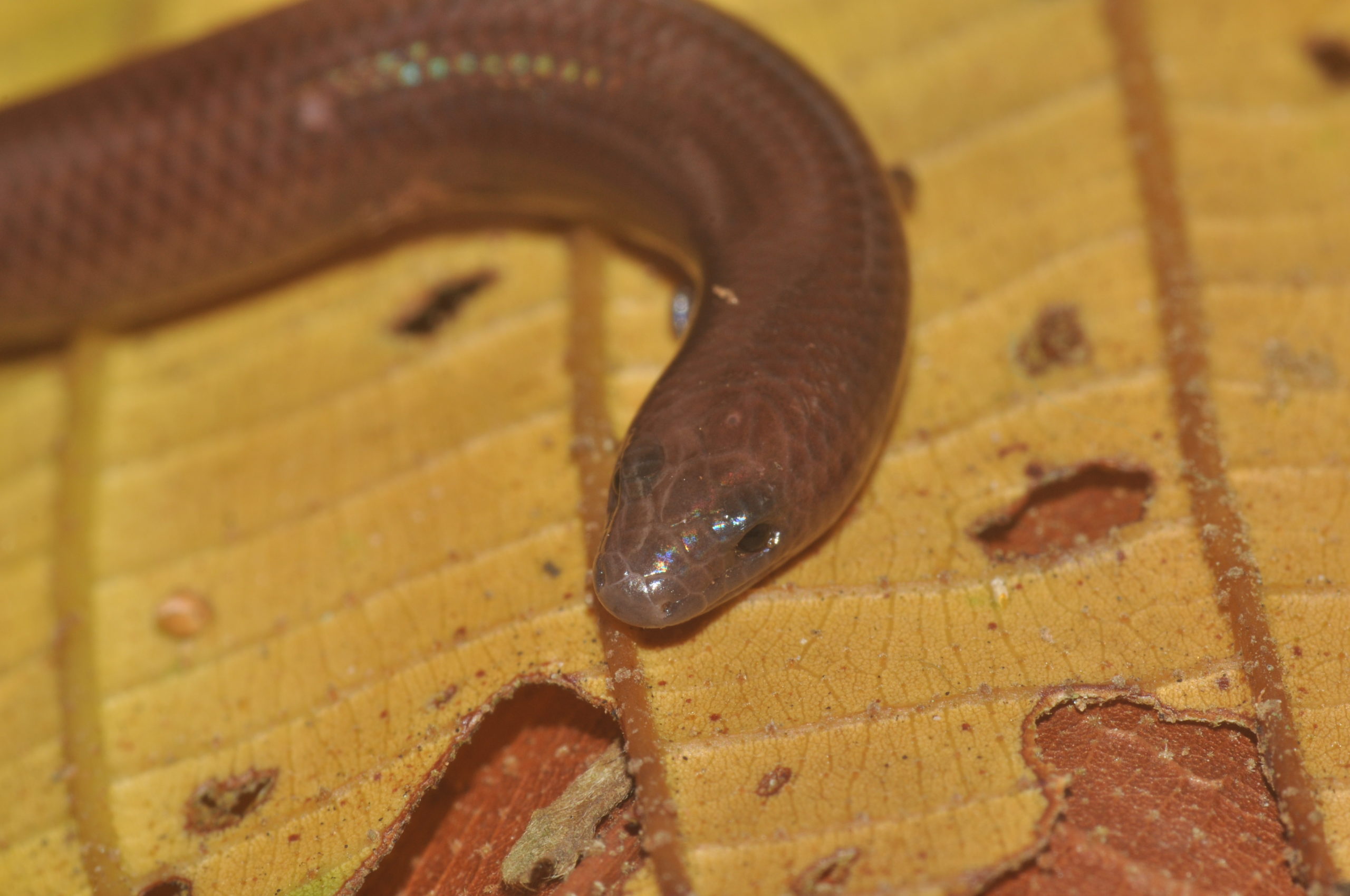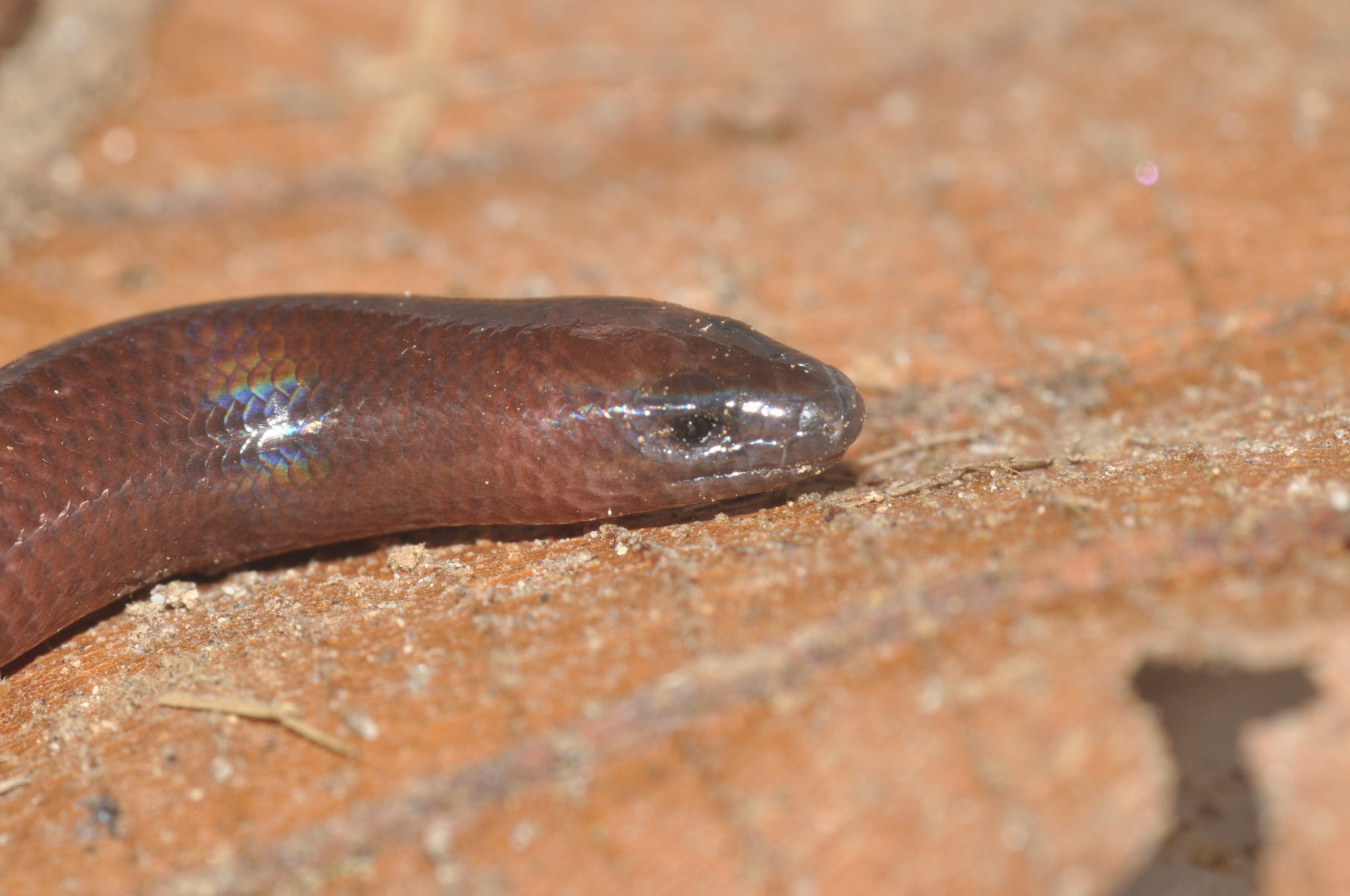Clark researcher explores how skinks have gotten back on their feet

In the rainforest of Southeast Asia, there exists a type of lizard that breaks an old law of biology that has fascinated scientists for more than a century. Skinks, originally four-legged creatures, dropped their limbs about 60 million years ago, but about 40 million years later, some species grew them back — negating a commonly held belief that once you lose a complex structure, you can’t re-evolve it in the same way.
With funding from the National Science Foundation, a team of researchers led by Clark University Biology Professor Philip Bergmann visited the Philippines for three field seasons, collecting different species of Brachymeles skinks and using high-speed cameras to study how they move and burrow. Some of the skinks were completely limbless, some had small limbs, and others were larger, with fully formed legs and feet. The researchers found that the smaller, snakelike species were slower when it came to burrowing and slithering across surfaces, while the skinks that re-evolved to have shorter bodies and five toes were bigger, faster, and better at catching prey.
Furthermore, the team found a correlation between climate change and how the group evolved.
Story continues after video
Bergmann reported his findings in a paper, “Locomotion and paleoclimate explain the re-evolution of quadrupedal body form in Brachymeles lizards,” which was recently published in Proceedings of the Royal Society B — the Royal Society’s flagship biological research journal. His work has also been featured in the New York Times and New Scientist, among other publications.
“This is one of the examples of a re-evolution of a complex structure where we now know a bit more about the details,” Bergmann explains. “Our research shows that it happened in conjunction with climatic changes that affected the skinks’ locomotion and ultimately the niches they’re filling in their environment.”
Bergmann has long been interested in the evolution of snakelike body forms — a characteristic that evolved convergently in many animals, including fish, reptiles, amphibians, and even mammals. But Brachymeles is one of a few groups on the planet that exist in so-called intermediate forms. “These aren’t transitional forms,” he explains. “They aren’t trying to become snakes, but they give us a view into what transitions might have looked like evolutionarily, which is pretty rare.”

Both limbed and limbless skinks coexist in the same areas of the Philippines, but each fills a different role. The smaller, limbless lizards are secretive and eat small, defenseless prey like ant and termite larvae, while the larger lizards are more visible and eat anything they can overpower — including small snakes, other lizards, and centipedes.
“Why do you still have these snakelike skinks living in that same place, that same wet soil?” Bergmann and his team asked. “What’s happening, and what you see over and over in evolution, is you have these animals radiating — they diversify and fill different niches. New species arise and partition up that habitat so they don’t compete, necessarily.”
The researchers also found a correlation between the skinks’ evolution and climate change in the distant past. Published literature on the paleoclimate revealed that when Brachymeles skinks initially evolved to become snakelike, the climate was drier and had better-defined seasons. Other snakelike lizards that are alive today are often found in dry places like South Africa, northern Africa, and Australia, Bergmann explains, and scientists believe the snakelike form is an adaptation for a burrowing lifestyle. But 20 to 25 million years ago, a group that now includes 17 species re-evolved to gain legs and toes — a change that happened at the same time the climate in the Philippines shifted from a semi-dry to an ever-wet zone. The soil became damper and more compact, with additional vegetation like roots and leaf litter making it harder to dig.

A changing climate, Bergmann hypothesizes, would explain why some species re-evolved limbs.
Furthermore, the scientists found that larger skinks were better at digging, but even the smaller, snakelike species moved their tiny limbs back and forth when burrowing into the ground.
Bergmann hopes to study intermediate forms of skinks in South Africa and compare those species to skinks found in the Philippines and Australia, which he has previously researched.
“In each instance, we know they evolved a snakelike body form, and some of my past work shows that in each of these instances, they did it slightly differently,” he says. “What I’d like to do is understand, from the genome level through the phenotype to the function, like locomotion, whether you have convergent evolution across all these levels of organisms in biology.”


